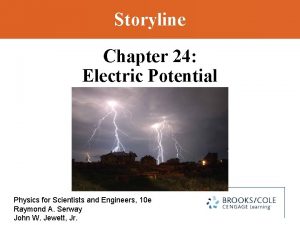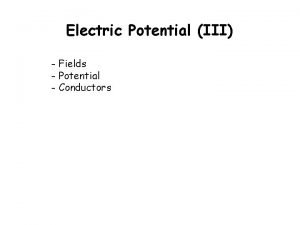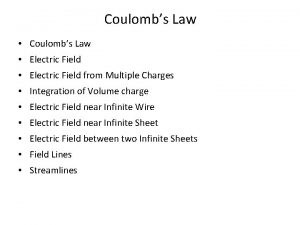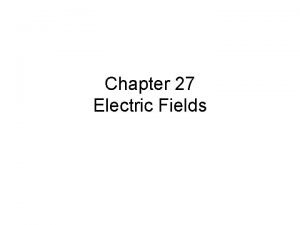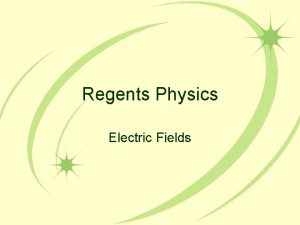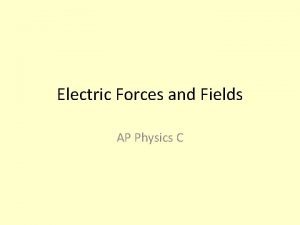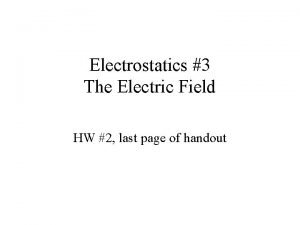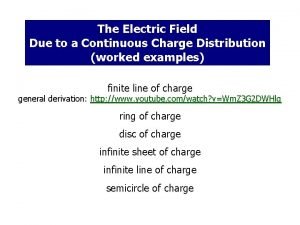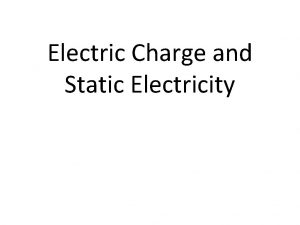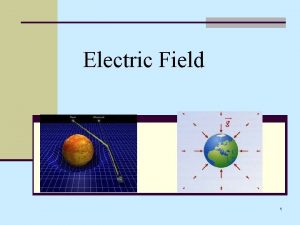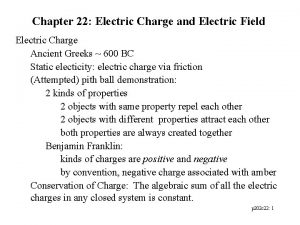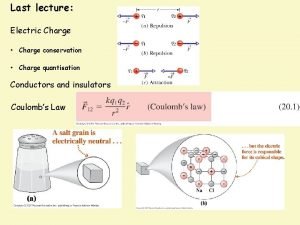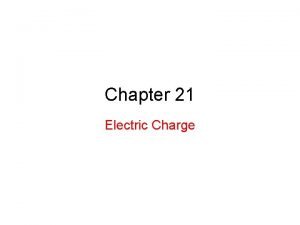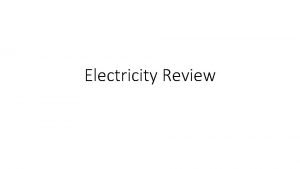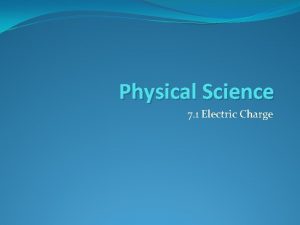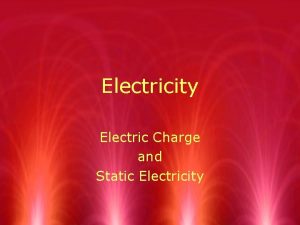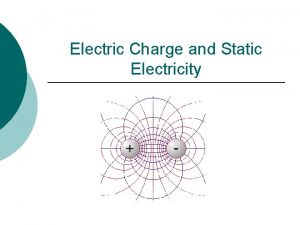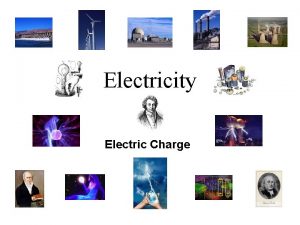ELECTRIC FIELD GLOSSARY Electric field Electric charge Test



















- Slides: 19

ELECTRIC FIELD

GLOSSARY Electric field Electric charge Test charge Point charge (non dimensional particle with a non-zero charge) Field lines Electric dipole (Two equal charges, opposite in sign) Vacuum permittivity ε 0 Set

WHAT IS A FIELD? A field is a set of values corresponding to a physical quantity -either scalar or vectorthat are associated with every point in a space.

Analogy: The electric field surrounds an electric charge The gravitational field surrounds a mass.

Electric field vector E The electric field vector is defined as the force on a point charge q (called test charge) due to any other charges, when placed at any point in space, divided by the charge q: E = F q The magnitude has units of force/charge: Newton/Coulomb (N/C)

FIELD LINES The electric field can be represented by field lines. The direction of the electric field at any point is tangential to the field line through that point.

The number of field lines is proportional to the magnitude of the charge. The electric field is stronger where field lines are closer together.

EXAMPLES OF FIELD LINES Field lines start on a positive charge and end on a negative charge.

Electric Field Lines of an electric dipole (Two equal charges, opposite in sign)

Electric Field Lines of two Positive Charges

Magnitude of an Electric Field of a point charge Q in the vacuum E = F/ q = k Qq/ qr 2 = k. Q/r 2 or, in terms of ε 0 the vacuum permittivity k= 1/ 4πε 0 E= Q/ 4πε 0 r 2

If there are two (or more) point charges how to determine the electric field at the point P? E E 2 P Q 1 E 1 Q 2

IT’S YOUR TURN … EXERCISE 1 Which field is stronger? (Justify your answer) A B

EXERCISE 2 “The electric field generated by a point charge at a distance r from the charge is proportional to r squared. “ Is it true or false? (Justify your answer)

EXERCISE 3 Draw the electric field lines - -

EXERCISE 4 A charge of 3µC is used to test the electric field of a point charge of 6 C that causes a force of 800 N. What is the magnitude of the electric field?

EXERCISE 5 If a test charge moves to a location three times as far as its original location, how does the electric field change?

EXERCISE 6 Write the magnitude of an Electric Field of a point charge Q in a medium.

Prof. ssa Babbo Paola Liceo Scientifico Vitruvio –Avezzano a. s. 2014 -2015
 Chapter 21 electric charge and electric field
Chapter 21 electric charge and electric field Chapter 21 electric charge and electric field
Chapter 21 electric charge and electric field Chapter 16 electric charge and electric field
Chapter 16 electric charge and electric field Chapter 21 electric charge and electric field
Chapter 21 electric charge and electric field Difference between charge and electric charge
Difference between charge and electric charge Difference between charge and electric charge
Difference between charge and electric charge Electric field of a finite line charge
Electric field of a finite line charge Electric field due to infinitely long straight wire
Electric field due to infinitely long straight wire Electric field of a finite line charge
Electric field of a finite line charge Electric field of infinite line
Electric field of infinite line Electric field at a point formula
Electric field at a point formula Electric field si units
Electric field si units Electric field lines about a point charge extend
Electric field lines about a point charge extend Electric field of line charge
Electric field of line charge Force on charge in electric field
Force on charge in electric field Electric field due to a continuous charge distribution
Electric field due to a continuous charge distribution Gauss law of magnetism
Gauss law of magnetism Distinguish between magnetic and nonmagnetic materials
Distinguish between magnetic and nonmagnetic materials Magnetic field
Magnetic field Electric potential energy work formula
Electric potential energy work formula






